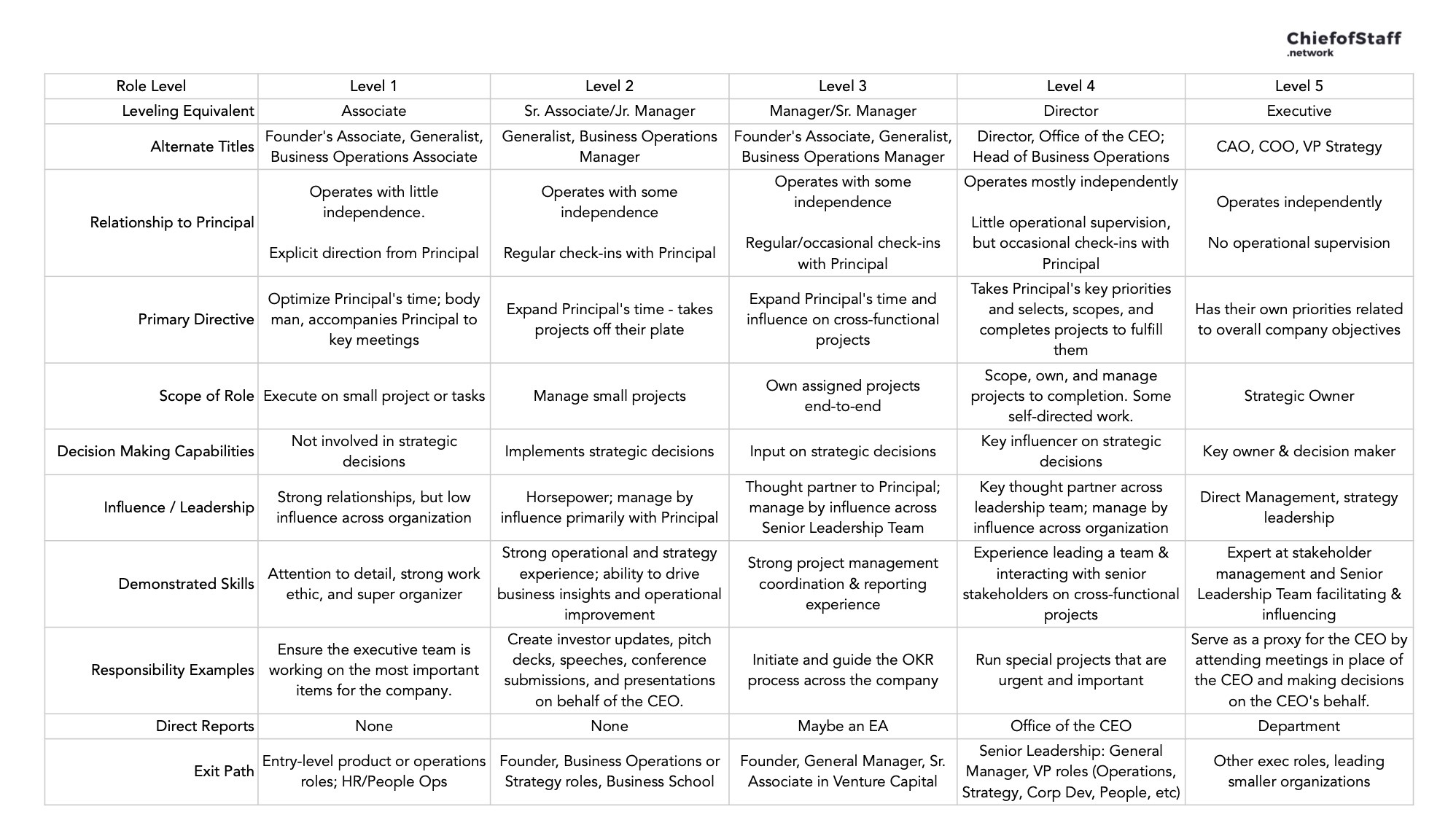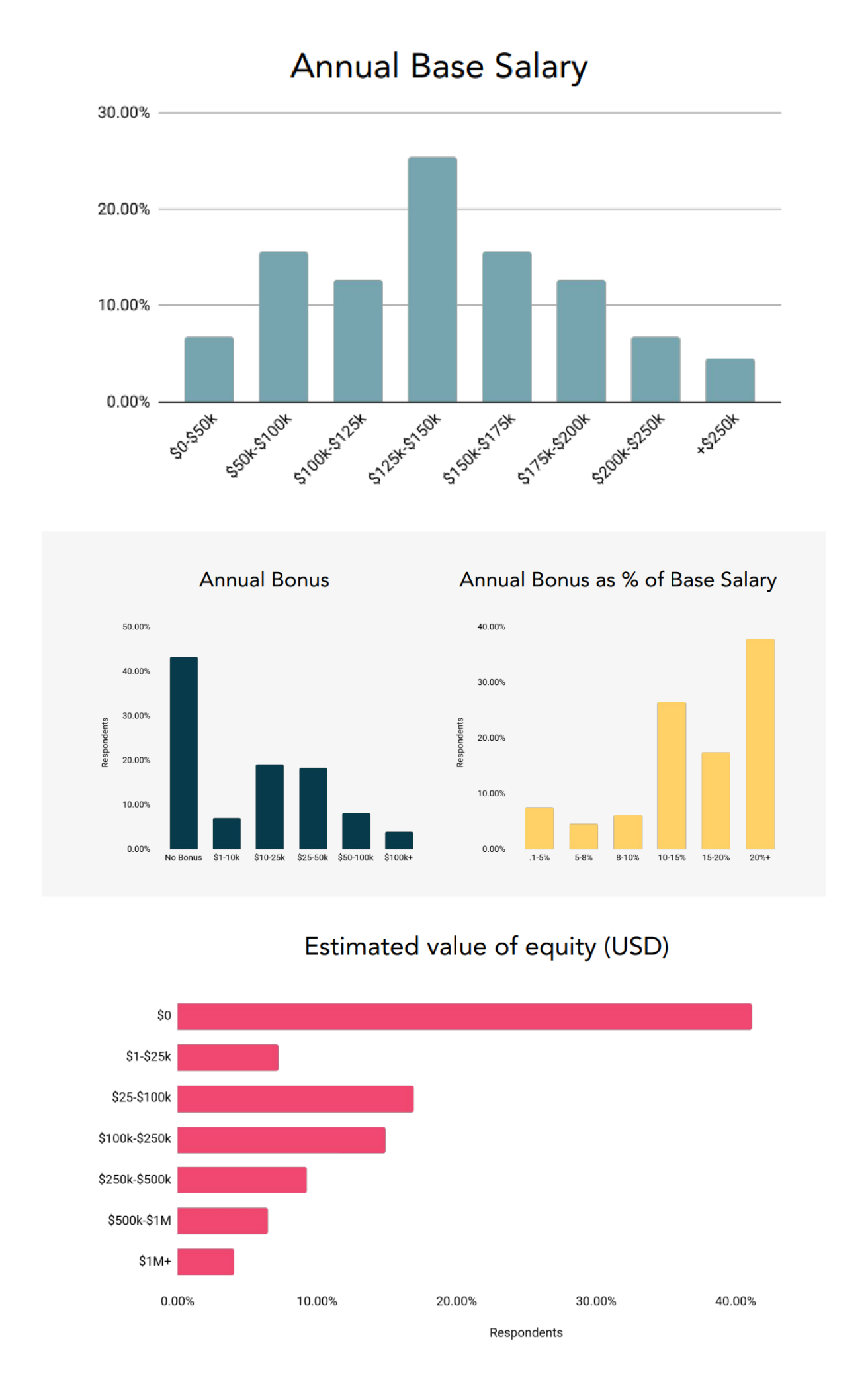Demystifying the startup Chief of Staff role

The Chief of Staff (CoS) seems to have become the hot, hot role amongst startups. There’s currently 3,000 active job postings for CoS’s and 25,000 CoS’s within the U.S., according to Linkedin.
Over the years, I’ve gotten questions from founders who are deciding whether to bring on a CoS, and job seekers who are deciding whether to be one. I’ve inferred that my credentials to speak on this topic come from previous stints as a CoS at an early-stage healthcare startup, and starting a (niche, but mighty) CoS in Healthcare community in New York alongside my friends Sherman and George where I got to understand the role from 30+ stellar operators across pre-seed to Series D startups.
Folks may be on the hunt for their next startup adventure this holiday season. So, I’ve consolidated FAQs of the role, alongside some wisdom from past and present CoS’s who are, frankly, way wiser than me.
What does a Chief of Staff do, exactly?
The overarching challenge with the role is that there are many definitions out there. In my opinion, the overarching value of the CoS is to make the CEO (or “Principal”) more effective, and thus, increase velocity towards reaching the business goals of the startup. The responsibilities of a CoS fall into five buckets:
- Strategic planning. Helping the CEO and leadership team set company-wide direction and business goals (e.g., annual KPIs), that lay out the vision and roadmap for the startup.
- Operating cadences. Ensuring that regular daily, weekly, quarterly company-wide rituals such as leadership meetings and functional standups are in place and running smoothly, so the leadership team and employees can execute towards business goals set in #1.
- Investor relations. Managing communications and relationships with existing and future investors, including prepping board updates, board meetings, and fundraising.
- Special projects. Jumping in on high-priority and urgent strategic opportunities within the startup, such as standing up functions in the early days, filling in for functional heads who are on leave, and evaluating new business lines.
- Culture whisperer. The best CoS’s can liaise multidirectionally between the CEO, leadership team, and employees, in connecting siloes and unearthing pain points and insights across the company to build a healthy and communicative internal culture.
In the early stages, as a CEO is looking for product-market fit, the CoS will likely spend more time in bucket #4, filling in functional gaps that the startup doesn’t need (or can’t afford) full-time hires for, yet. For example, standing up and running sales or recruiting for the startup. I see this CoS archetype commonly amongst startups with a solo founder as CEO.
As the company matures and finds product-market fit, the first three buckets become more critical of establishing playbooks, systems and rituals that will scale with your team. My friend Kevin Fishner wrote a great article on this in First Round, on focusing on your first ten systems, not your first ten hires.
“Establish routines for effective communication, and always be ready to adjust those routines. Agility in the CEO-CoS relationship and the CoS’s ‘lanes’ is critical as the company evolves.”
— Megan Kelly, Chief of Staff at Transcend Therapeutics
What candidate profile makes a good Chief of Staff?
CoS’s come from all sorts of backgrounds — from management consultants and product managers to medical doctors and executive assistants who’ve leveled up into the role. What they have in common are they’re “T-shaped” leaders, an all-around athlete that can problem solve alongside the CEO on company priorities, prioritize ruthlessly, and influence sideways and upwards without direct authority.
A stellar candidate can spike in skills, personalities, and approaches that complement where the CEO may lack or want to spend less time in. For example, a product-minded CEO may want someone to manage and govern finances; or a visionary-leaning CEO may want a CoS that leans toward executor or processor.
My spicier take is that half of existing CoS’s at startups aren’t actually functionally CoS’s. If the day-to-day requires the CoS to spend 80%+ of their time managing the startup’s finances or coordinating the CEO’s schedule, you might as well call the roles what they are: “Head of Finance” and “Executive Assistant.” If there are a bunch of one-off tasks across workstreams without an assigned responsible party, ask if all those bullets makes sense in one sympatico job description or if the responsibilities are better off dispersed across the existing team.
What does career trajectory look like?
The average tenure of a CoS is 18 months. At many startup, it’s carved out to be a 18 to 24 month “tour of duty” given learning plateaus and the CoS often has a clear picture of what they want to specialize in by the end of their tenure.
As the CEO, make sure that there’s regular and fluid touchpoints starting during the interview process to discuss the CoS’s career ambitions and trajectory. Three common promotion / exit opportunities I’ve seen amongst CoS’s:
- Chief of Staff to functional specialist, graduating into a functional lead like Product Manager, Head of Business Operations, or even the Chief Operating Officer.
- Chief of Staff to founder or CEO. I’ve heard this from a bunch of CoS friends, who pursued the role based on wanting to learn the ropes of being a founder or CEO themselves one day. The CoS role is a great way to get a breadth of company building exposure in preparation.
- Chief of Staff “lifer,” who find the hawk-eyed view of the role exhilarating, and see themselves either leveling up in the CoS role past the typical tour of duty, or finding another CEO and company to join as CoS. I’ve seen this to be a much rarer profile.
“In an early-stage organization, unlike other roles, your Chief of Staff role will change dramatically every couple months as the team grows and business needs evolve, so schedule time to do a formal job description / RACI refresh with your Principal every quarter (and force them to actually think about it!). This is because the amount of change in this role is more than any other role in the org. If not, you and your Principal might not be in sync on projects (and in some cases, entire functions). And you may need to find a new home for projects, in order to create capacity for you to take formal ownership on something new that’s falling through the organizational cracks.”
— Ishaan Jalan, Chief of Staff at Yuvo Health
Why the “lifer” profile is rarer, is because the CoS career trajectory can be frustratingly murky. The single biggest driver that CoS’s cite for leaving their jobs is lack of growth opportunities. CEOs have to be very intentional about setting up the role for upwards mobility and retention. Two common pitfalls:
Firstly, CoS’s often play the supporting role to functional specialists who are ultimately the responsible party in the RACI. In this case, the CoS can lack ownership and recognition for their work. A way to mitigate this is ensuring that the CoS responsibilities ladder up to clear business goals as much as possible.
“As a CoS, think critically about the problems you’re solving. It can be easy to shift into auto-pilot mode as you relentlessly activate owners who are ultimately accountable for the work, but don’t fall into the trap of just project managing. The exposure to business challenges involving the product, people, and processes is unparalleled as a CoS — push yourself to solve problems as if you were the accountable owner, so that you can maximize learning along the way.”
— Charissa Qian, Head of Growth at Pomelo Care, former Chief of Staff at Quartet Health
Secondly, CoS’s aren’t made aware of what leveling up can look like, from junior- to mid- to senior-level as illustrated in the chart below by the Chief of Staff Network. The CEO should explicitly call out opportunities for upskilling and increased scope of responsibilities alongside the growth of the startup. One example I’ve seen is approaching Series C+, the CoS can set up and run the “Office of the CEO,” including management of associates and analysts that act as a mini-SWAT team within the startup.

“As a Principal, you want to have the conversation in the interview process around expectations for the role after Chief of Staff. Is it a General Manager role with P&L responsibility that is “CEO-lite”? For CoS’s, try to get into a ‘Head of’ role at the company, and if not, support a transition.”
— Mike Maseda, Head of Business Operations at GenHealth.ai, former Chief of Staff at Reside Health
What should the interview process include?
I know the smartest individuals who get into a CEO-CoS relationship, with it not working out. This relationship requires both counterparts to work together not just on a weekly basis, but often daily and hourly. Imagine the latter during high-tension, high-stakes moments in the startup journey, like in the midst of fundraising fielding twenty different follow-ups to VCs. It’s critical for the pair to not just be individually smart, but to be collectively compatible based on personalities, working styles, and core values.
“Make sure there’s really good alignment with the Principal. Everybody knows that you need to get along well but you also need to be aligned on core values, like speed vs. accuracy, running lean vs. fast.”
— Jack Weinberger, Co-founder and CEO of Ajax, former Chief of Staff at Humming Homes
There’s the usual interview checklist like case studies, behavioral questions, and reference checks (both ways!). And explicitly asking, “How do you like to work?” may help. (This reminds me, in my old consulting job, we had personal user manuals for each employee where we’d share our preferred ways of working with colleagues. It was pretty helpful.) But the best way is to create touchpoints to “sample” working together. Two places this can be incorporated during the interview process:
“In the trenches” exercise, working on a timeboxed business problem that the company is facing. This can be done after the screening interview, and should evaluate relevant soft and hard skills while simulating the day-to-day of collaborating together. As an example, when I was interviewing, one of the critical 30/60/90 day success metrics for my CoS role was helping close the first [X] customers and $[Y]k ARR. As the second step in the interview process, my CEO had me walk him through how I would approach setting up a business development funnel. I came to the session with prework, and we spent an hour in a FigJam whiteboard (this was pandemic days, I highly recommend in-person for this role) walking through my approach, including ideating and debating target ICPs, inbound and outbound strategies, internal software stacks, and success metrics.
Vibes check, where you spend time socially together. This can be the final step in understanding personality fit and is my extreme stance on the airplane test of asking, “Would I want to be stuck in an airport with this candidate/CEO?” I’m a firm believer that if individuals are going to commit to the startup grind together for 10+ hours a day, it’s important to see a manager-to-report, mentor-to-mentee and even friend-to-friend relationship.
“Trust is earned. As your CoS executes with excellence and earns your trust, give them more context and exposure, as this is the distinctive of the CoS opportunity.”
— Charissa Qian, Head of Growth at Pomelo Care, former Chief of Staff at Quartet Health
What does compensation look like?
Not surprisingly, the compensation for CoS’s vary widely, based on level, startup stage, education, location, industry, and sadly gender. I’m a big believer in pay transparency, especially when it comes to reducing the gender wage gap. One survey (n=308) I viewed showed that female CoS, who made up two-thirds of survey respondents, were paid 64% the average salary of their male counterparts.
Omna Search published base salary benchmarks (n=107) by startup stage and years of experience in 2022:

The Chief of Staffs Network published their 2022 compensation report, see below. The average CoS salary in North America is $158k, and for my healthtech friends, turns out the healthcare industry had the highest average at $195k. Disclaimers to this data are it includes CoS’s working outside of startups given almost half of respondents report no equity compensation, and n=?.

Where are the watering holes to find Chief of Staffs?
The CoS is often a one-of-one role within a startup, and can be quite lonely. Thankfully, there’s some awesome external resources and communities for CoS’s to swap lessons, and for CEOs to find their next CoS. One caveat: the hit rate of finding a CoS amongst existing CoS’s is pretty low, given folks graduate from the role. But CoS communities can be strong referral networks.
Here are some communities that’ve hit my radar:
- Chief of Staffs Mastermind Network, by Primary VC (application here, free).
- Ask a Chief of Staff, by Clara Ma (join here, free). Clara is basically the CoS matchmaker. She runs a search firm for CoS’s.
- Chief of Staff Network (application here, $950 annual membership). I never paid or joined this network, but they dub themselves the “premier professional association for Chief of Staffs” with 900+ members.
- Chief of Staffs in Healthcare (application here, free). It’s doubly lonely and complex to figure out being a CoS and building in healthcare. I’ve made wonderful friends from this community, and it’s now run by the incredible Muneeza Patel at Memora Health.
Thanks to Peter MacRobert who took a big chance on me, and gave me the platform and trust to run with things as his Chief of Staff.
